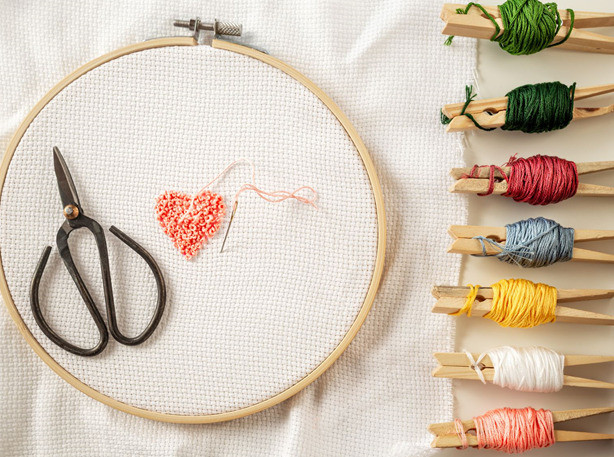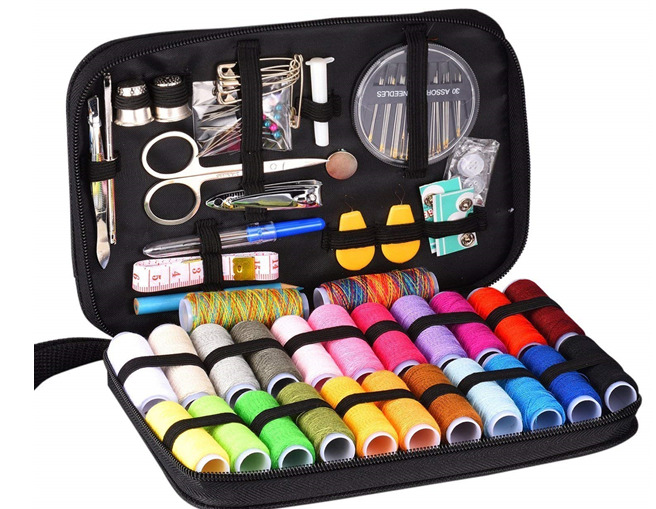Isn’t it fascinating to reminisce those days when grandmothers and mothers flawlessly tailored a dress or knitted a sweater for you in no time? This timeless craft has only got better with time. If you ever contemplated trying a hand at sewing, now is the time! Before your enthusiasm fizzles out, we suggest you go through this comprehensive guide to give your passion its wings!
Sewing in today’s times has been made easy; thanks to innovative machines and accessories that can save on your time. Once you make up your mind, you could look up sites such as https://www.sewinguru.com to find the right accessories that can facilitate the learning process and enhance your skills. From software programs to commercial embroidery machines, you can find all that you need for smart sewing at such well-equipped sites.
Sewing Crafts: Exploring the variety
Sewing crafts are more than just stitching with needle and threads. Yes, it might demand a little patience and dedication but would provide you with the opportunity to create something unique and special.
Innovation is the key in any form of craft and sewing has so much to offer. From general sewing, embroidery, patchwork, quilting, applique to fabric collage, and more, sewing includes an array of techniques. It could also be combined with indigenous techniques of dyeing, printing, and more.
Here’s a brief introduction to the various categories of sewing.
The basic form
The fundamental form of sewing involves using either hands or sewing machines to attach pieces of fabric. From hand stitching, machine sewing, seaming to pleating, and more, there are a plethora of possibilities. And that’s not all as to take it to the next level, you can take up creative needlework.
Embroidery

If you want to give a plain piece of cloth some artwork, you could try embroidery. This craft of thread work involves a series of stitches that can be done using colorful yarns and threads. From weaving surface patterns to hoops and creating all kinds of designs, there are myriad ways of embroidering you can learn.
Quilting
This involves techniques close to stitching the fabric like a blanket. You could either use a plain fabric or use a decorative piece for quilting. If you are a beginner, you could begin with old blankets. Just make sure that the fabric has an even surface. You can infuse embroidery or applique work to create quilted bed covers, jackets, etc.
Patchwork
Let’s say you want to create a large piece of cloth work without much labor. Patchwork can be a good option. This can be done by stitching blocks of cloth in a pattern. Once you have the basic shape, it can be repeated to create a larger design. Make sure you use fabrics with similar weight to avoid fraying.
Applique work
On the lines of patchwork is applique. The best thing is that you can use old fabric scraps to sew onto a fabric of different make. It allows creative craftsmen to embellish a cloth with differently shaped textile pieces through needlework.
If you are a creative artist keen to recycle old fabric scarps, fabric collage is the way to go. From old quilts, worn-out table clothes to discarded ones, you can assemble it all into one fabric piece. Fabric collages look vibrant.
Things to consider before taking the first step

Learning to stitch is an exciting journey but a few tips could enable you to do it better. Here are some basics you should know.
Your fabrics
It is essential to know a little about the material of fabric you intend to use. Every fiber has unique properties which mean they react differently when exposed to different conditions. Basic knowledge and familiarity with different fibers or yarns can enhance your overall experience of sewing and deter blunders.
Have a sewing kit ready
Your toolbox is your go-to creative kit. You don’t need to splurge on it, but getting a few things in place can work wonders. A pair of scissors, threads, and needles is the least to start with. You could expand the thread variety by including wool embroidery yarn, cotton embroidery threads, etc.
With basic stitching on your fingertips, you can add a tape measure, fabrics, pins, transfer chalk, seam ripper, and more in your kit.
You can pick a needle, based on what you will be stitching. Needles differ in size, thickness, size of their eye as well as its needlepoint. From those created for the finest of threads to the ones made for quilting, you can have a set of needles that can cater to your stitching needs.
Go trendy with your threads
Pick a thread for any occasion! Yes, that’s how wide-ranging the options are. The basic all-purpose thread continues to be the cotton one although you could opt for polyester blends for additional strength. Buying cheaper threads is not recommended as these could rip off easily.
One-step up: using the sewing machine
Planning to make a DIY frock for your little girl? Keeping a measuring tape would do you good. Measuring the fabric correctly is essential for a perfect finish, especially when stitching something of a specific size. Get one that offers both metric and imperial units as this would allow rapid conversions.
Want to take your passion a step further? You might consider embarking on an easy project to start with, but the sky is the limit. There are so many machines available in the market. You can pick a model that suits your abilities and budget. If you thought, you won’t be able to use one, check out this guide on how to use a sewing machine.
The internet is flooded with DIY sewing project ideas and you can take a couple of tutorials to set the stage. Make stitching a fun and skill-building activity as you get your kids to accompany you in creating patchwork quilt covers, cross stitch handkerchiefs, etc.
Bibs, mittens, aprons, hair bands, drawstring bags, cushion covers, soft toys, and the list is endless! It doesn’t matter if you’ve picked up the needle and thread for the first time, just get the basic toolkit and give it a go!

